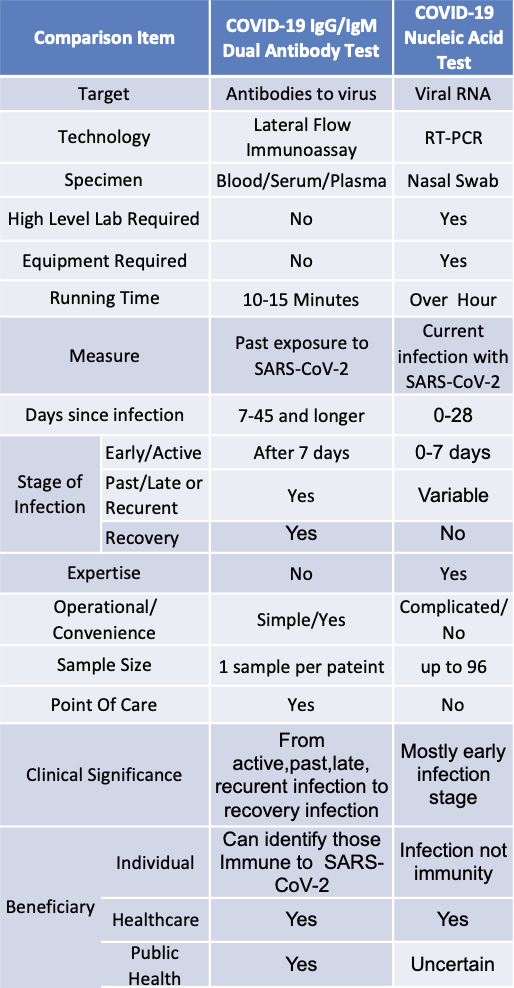Frequently Asked Questions
What is a Lateral Flow Immunoassay?
Lateral Flow Immunoassay, also known as lateral Flow Immunochromatographic assay, is a simple membrane-based device intended to detect the presence of a target analyte in a liquid sample without the need for specialized or costly equipment. However, there are lab-based options that can be supported by reading equipment. Lateral Flow Immunoassay is the technology behind low-cost, simple, rapid and portable detection devices popular in biomedicine, agriculture, food and environmental sciences.
What does LFIA stand for?
LFIA is for Lateral Flow Immunochromatographic Assay.
What is the principle of Immunochromatographic Assay?
It is the same as ELISA sandwich method, only difference is in that immunological reaction is carried out on the chromatographic paper by capillary action. The principle behind the lateral flow assay is the movement of the liquid sample or the sample containing the analyte of interest along a strip. The strip is made with polymeric materials and has specific zones or sites where molecules have been conjugated with a label. When the analyte-containing sample passes through these zones, it interacts with molecules designed to bind specifically to the analyte present in the sample.
How does Lateral Flow Immunoassay work?
LFIA uses immunoassay technology using nitrocellulose membrane, colored nanoparticles (or labels), and typically antibodies, to produce results. If the target is present, the immobilized conjugated antibodies and labels will bind to the target and continue to migrate along the test.
What is the advantage of Lateral Flow Immunochromatographic Assay?
Compared to other methods, Lateral Flow Immunoassay (LFI) has a significant point-of-care advantages as followings:
- Simple: Simply add one drop to the sample port and results can be read by eye at the point-of-care.
- Rapid: Each test only requires less than 10 minutes of hands-on time.
- Flexible: The test works with whole blood, serum, and plasma, and requires only a small amount of sample.
- Combined IgG/IgM test: Simultaneously detects both IgM and IgM human antibodies against the COVID19 virus. oCost-effectiveness: The tests are inexpensive.
- No equipment required: Results can be read by eye without the need for testing instruments.
- Stable and robust storage: The test kit can be kept at room temperature, without requiring refrigeration.
How do you do a Lateral Flow test?
Lateral flow immunoassays are easy to use. The user simply needs to dip the sample pad into the liquid they want to test and then lay the test flat or apply the sample directly to the cassette. If the test is positive, a colored or fluorescent line will show up on the test along with a control line. See more in test manual.
How can I know more about COVID 19 Rapid Test Kit?
Please visit our COVID-19 area on this site to see our product detail, flyer, brochure, manual, video and so on. Please always remember to come back to see our updating.
Why do I need to check my COVID 19 antibody?
Individual rapid test can detect the presence of antibodies in the blood of people believed to have been infected with COVID-19. Antibodies are produced over days to weeks after infection with the virus. Tests to detect antibody responses to COVID-19 in the population will be critical to support the development of vaccines, and to add to our understanding of the extent of infection among people who are not identified through active case finding and surveillance efforts, the attack rate in the population, and the infection fatality rate. The strength of antibody response depends on several factors, including age, nutritional status, severity of disease, and certain medications or infections like HIV that suppress the immune system.
What are advantages of COVID-19 IgG/IgM Dual Antibody Test compared to COVID-19 Nucleic Acid Test?
See following comparisons in Table.

How do I properly store my antibody?
This is a very common question from customers. In general, an antibody needs to stay in a cold and sterile condition without frequently being frozen and thawed. Any contamination during use must be avoided and prevented. For an individual antibody, specific descriptions are always given in the datasheet or instruction for use.